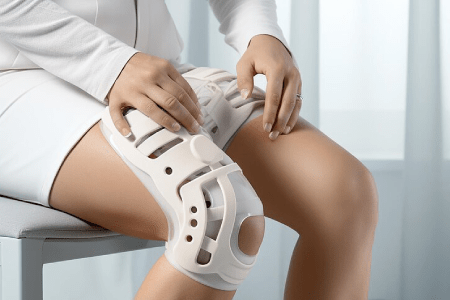Hip Replacement Surgery in Hyderabad
What is Hip replacement surgery?
Causes of Hip pain
The most evident causes of hip pain are arthritis or hip diseases developed at birth. Some of the types of arthritis that can cause hip replacement surgery include –
- Osteoarthritis – This usually occurs in people in the age of 50 or above. This damages and ruptures the cartilage of the hip bones causing stiffness and pain.
- Rheumatoid arthritis – Rheumatoid arthritis causes extreme inflammation and damages the cartilage. This causes pain and stiffness of the hip that can get unbearable at times.
- Osteonecrosis – When the blood supply to the femur is obstructed at the time of an injury or hip dislocation, the condition can be called osteonecrosis. This causes bone damage and arthritis in the long run.
- Post -traumatic arthritis – Post traumatic arthritis happens immediately after an injury or major dislocation. This causes stiffness and pain in the hips.
Types of Hip Replacement surgery
Hip replacement surgery can be done in more than one way depending on the condition and severity of the condition. The most common types of Hip replacement surgery are –
- Total Hip replacement – Partial Hip replacement.
- Traditional and minimally invasive Hip replacement surgery
- Anterior and posterior Hip replacement surgery.
- Lateral Hip replacement surgery.
Anatomy of the Hip
Ideal candidates for Hip replacement surgery?
At initial consultation
Instructions before surgery.
- You will be required to stop taking aspirin or any other anti-inflammatory drugs and medicines as they can cause blood loss.
- You will be asked not to eat or drink anything for a few hours prior to the surgery.
- Maintaining a good, balanced body weight is very important as excess weight can cause potential infections and other severe conditions.
- Avoid smoking.
Procedure
Step 1 – The patient will be given general anesthesia.
Step 2 – An incision will be made in the hip area to get rid of the bone and cartilage that is damaged.
Step 3 – The Implants will then be inserted in the area and the type of implants can be chosen beforehand by discussing it with your doctor.
Step 4 – the incision is closed with dissolvable sutures or stitches.
Instructions after surgery.
- You will straight up be taken to the recovery room and kept under observation for 1-2 hours after which, you will be sent home depending on your condition.
- Take the medications prescribed by the doctor for a speedy recovery.
- Maintain hygiene in the surgical area to avoid infections.
- Never miss your follow up sessions with the doctor.
- Keep your legs in an elevated position to ease the pain.
- Avoid lifting heavy objects or weights.
- Avoid consumption of alcohol.
- Avoid driving.
Side effects of the surgery
Some of the potential risks of the surgery include –
- Infection
- Bleeding
- Discoloration in or near the surgical area.
- Dislocation.
- Nerve damage
- Loosening of the implants.
- Continuous swelling
- Joint pains.

